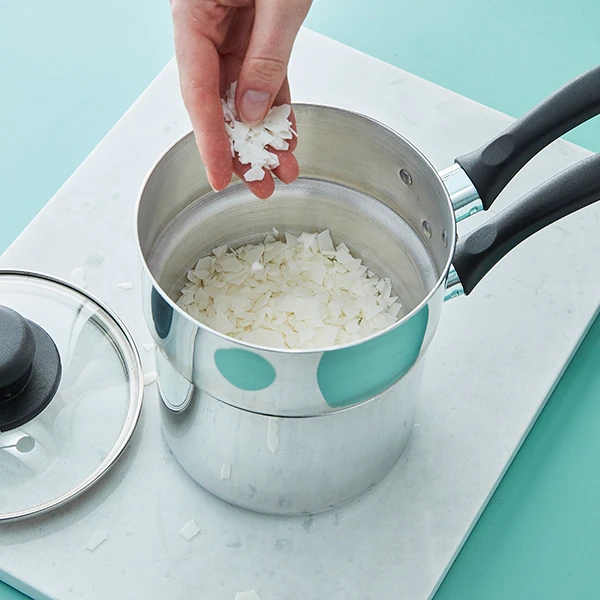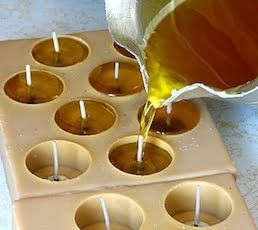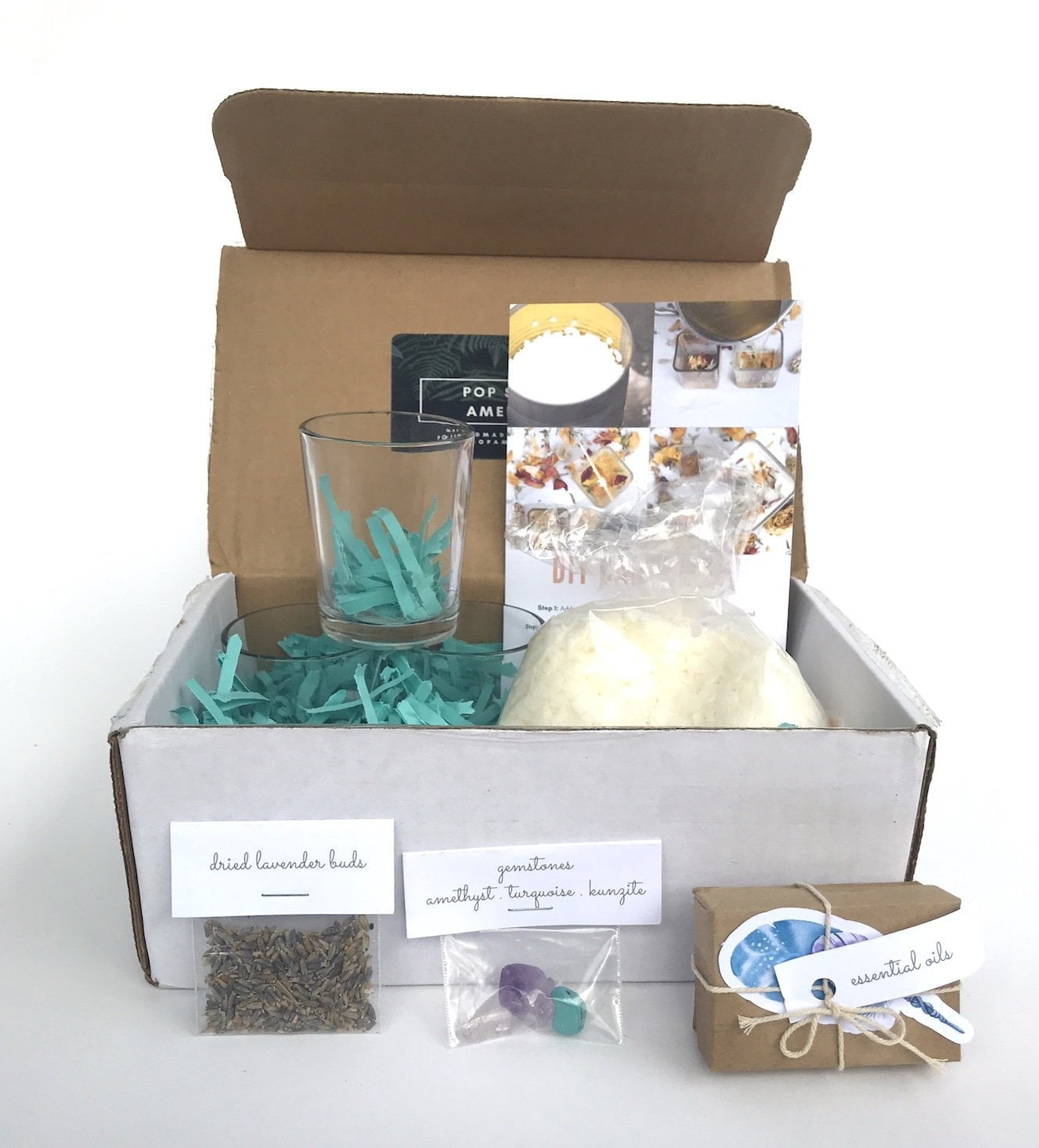Are you wondering what kind of scents to use for candle making? The use of scents plays a crucial role in creating captivating and memorable candles. Whether you are a novice or an experienced candle maker, selecting the right scents can be an exciting yet challenging process.
When it comes to candle making, the choice of scent is a pivotal factor that can make or break the overall appeal of your candles. Understanding the different types of scents available and how they contribute to the final product is essential for crafting unique and alluring candles.
In this article, we will delve into the world of scents for candle making, exploring the differences between fragrance oils and essential oils, identifying various scent families, learning how to choose the right scents based on season, purpose, and target audience, discovering the best scent combinations for creating inviting fragrances, and uncovering tips for developing a signature scent for your candle line.
Additionally, we will touch upon the importance of quality and ethically-sourced scents while highlighting common mistakes to avoid in scent selection.
Join us as we embark on a journey to create memorable and effective scents for your candle business.
Understanding Fragrance Oils vs Essential Oils for Candle Making
When it comes to making scented candles, one of the most important decisions you’ll need to make is choosing between fragrance oils and essential oils. Each type of oil has its own set of benefits and considerations, so it’s important to understand the differences before making your selection.
Fragrance Oils
Fragrance oils are synthetic or artificially-created oils that are specifically designed for candle making. They come in a wide variety of scents and are often more affordable than essential oils. Fragrance oils can also provide a stronger scent throw, meaning they can fill a room with fragrance more effectively than essential oils.
However, it’s important to note that not all fragrance oils are created equal. Some may contain potentially harmful chemicals or allergens, so it’s crucial to source high-quality, phthalate-free fragrance oils from reputable suppliers. Additionally, some candle makers prefer to avoid synthetic ingredients altogether for personal or ethical reasons.
Essential Oils
Essential oils, on the other hand, are natural extracts derived from plants. They offer a wide range of therapeutic benefits and come in a variety of natural scents. While they may be more expensive than fragrance oils, many people prefer them for their natural origins and potential wellness benefits.
When using essential oils for candle making, it’s important to consider their flashpoint and how they interact with the wax. Some essential oils have lower flashpoints and may evaporate too quickly when exposed to heat. Additionally, not all essential oils are suitable for use in candles, so it’s important to do thorough research before incorporating them into your products.
Considering the pros and cons of fragrance oils vs. essential oils is an important step in creating unique and effective scents for your candles. By understanding the differences between these two types of oils, you can make an informed decision that aligns with your brand values and target audience preferences.
In summary, both fragrance oils and essential oils offer distinct advantages and considerations when used in candle making. It’s crucial to carefully weigh the benefits and drawbacks of each option to ensure that you create high-quality candles with captivating scents that appeal to your customers’ preferences and align with your brand values.
Exploring Different Scent Families
When it comes to creating candles, choosing the right scents is crucial in setting the mood and ambiance for any space. Understanding the different scent families available for candle making can help you create unique and captivating fragrances that appeal to a wide range of customers. Whether you prefer floral, citrus, woody, or earthy scents, each fragrance family offers its own distinct characteristics and benefits.
Floral Scents
Floral scents are often associated with femininity, elegance, and romance. These scents are perfect for creating a relaxing and soothing atmosphere, making them ideal for bedroom or self-care candles. Popular floral scents include rose, lavender, jasmine, and gardenia.
Citrus Scents
Citrus scents are known for their energizing and uplifting properties. These bright and fresh fragrances are perfect for creating an inviting atmosphere in common areas such as living rooms or kitchens. Popular citrus scents include lemon, orange, grapefruit, and bergamot.
Woody and Earthy Scents
Woody and earthy scents are often associated with warmth, depth, and grounding. These comforting fragrances are ideal for creating a cozy ambiance in spaces such as dens or home offices. Popular woody and earthy scents include sandalwood, cedarwood, patchouli, and vetiver.
By understanding the characteristics of each scent family, you can choose the right fragrance oils or essential oils to create a captivating experience that resonates with your audience. Experimenting with different combinations within these scent families can also lead to unique and inviting candle fragrances that set your products apart from others in the market.
How to Choose the Right Scents for Your Candles
When it comes to choosing the right scents for your candles, it’s important to consider the season, purpose, and your target audience. Different seasons evoke different emotions and memories, so selecting scents that align with the time of year can be a powerful way to create an immersive experience for your customers.
For example, floral scents like lavender and jasmine might be perfect for spring and summer, while warm and cozy scents like cinnamon and vanilla are great for fall and winter.
The purpose of your candles should also inform your choice of scents. Are you creating candles for relaxation and stress relief? Or perhaps you want to make invigorating and refreshing scents for an energizing effect. Understanding the purpose of your candles will help you select the appropriate fragrances to achieve your desired outcome.
Moreover, considering your target audience is crucial in scent selection for candle making. What kind of scents will resonate with them? Are they drawn to clean and fresh scents or do they prefer more complex and exotic fragrances? Understanding the preferences of your audience will help you tailor your candle scents to their tastes, increasing customer satisfaction and loyalty.
When choosing the right scents for your candles, it’s essential to consider seasonality, purpose, and your target audience. By carefully considering these factors, you can create memorable and effective scents that will appeal to a wide range of customers.
| Season | Purpose | Audience |
|---|---|---|
| Spring/Summer: Floral scents like Lavender | Relaxation: Lavender | Clean & Fresh: Citrus Scents |
| Fall/Winter: Warm & Cozy: Cinnamon/Vanilla | Energizing – Citrus Scents | Complex & Exotic: Sandalwood/Amber |
The Best Scent Combinations for Unique and Inviting Candle Fragrances
When it comes to creating unique and inviting candle fragrances, the possibilities are endless. The choice of scents can greatly impact the overall appeal and effectiveness of your candles. By combining different scents, you can create a one-of-a-kind fragrance that sets your candles apart from the rest.
One popular approach to scent combinations is layering complementary fragrances from different scent families. For example, blending floral notes with woody or earthy scents can create a multi-dimensional fragrance that appeals to a wide range of preferences. Another option is to mix contrasting scents to create a more complex and intriguing aroma.
When choosing scent combinations for your candles, it’s important to consider the season, purpose, and target audience. For instance, fresh and citrusy scents are perfect for spring and summer candles, while warm and spicy fragrances are well-suited for fall and winter. Consider the intended use of the candle as well – whether it’s meant for relaxation, rejuvenation, or special occasions – and tailor the scent combinations accordingly.
Experimenting with different scent combinations is key to discovering unique and inviting candle fragrances. Don’t be afraid to think outside the box and try unconventional pairings. You may be pleasantly surprised by the captivating aromas you can create through innovative scent combinations.
By carefully selecting and thoughtfully blending various scents, you can develop distinctive fragrance profiles that enhance the ambiance of any space. Whether you’re looking to create calming aromas for a spa-like atmosphere or vibrant scents for an energizing environment, strategic scent combinations can elevate your candle line to new heights of allure and desirability.
Tips for Creating a Signature Scent for Your Candle Line
When it comes to creating a signature scent for your candle line, it’s important to consider the unique identity and brand of your business. A signature scent should embody the essence of your brand and leave a lasting impression on your customers. Here are some tips for creating a memorable and distinctive fragrance for your candle line:
- Define Your Brand Identity: Before you start creating a signature scent, it’s important to have a clear understanding of your brand identity. Consider the values, aesthetic, and target audience of your business. Are you aiming for a luxurious and sophisticated image, or do you want to portray a more playful and vibrant personality? Understanding these aspects will help guide you in choosing the right scents for your signature candle fragrance.
- Experiment with Unique Combinations: To create a truly unique and memorable scent, consider experimenting with different combinations of fragrance oils or essential oils. Mixing various scent families such as floral, citrus, woody, or earthy can result in an intriguing and complex fragrance that sets your candles apart from the competition.
- Seek Inspiration from Your Surroundings: Draw inspiration from your surroundings, whether it’s the natural landscapes around you or the bustling city life. Take note of scents that evoke strong emotions or memories and incorporate them into your signature fragrance. This could be anything from the refreshing smell of a summer garden to the cozy aroma of a fireplace on a winter evening.
Creating a signature scent for your candle line is an exciting opportunity to showcase the unique identity of your brand. By considering your brand identity, experimenting with unique combinations, and seeking inspiration from your surroundings, you can create a memorable and effective fragrance that represents the essence of your business. With careful thought and creativity, you can craft a signature scent that leaves a lasting impression on your customers while setting you apart in the competitive market of candle making.
The Importance of Quality and Ethically-Sourced Scents in Candle Making
When it comes to creating candles, choosing the right scents is crucial in making your product stand out. Not only do scents add a pleasant aroma to the room when the candle is lit, but they also have the power to evoke emotions and memories. However, it’s important to consider the quality and ethical-sourcing of the scents used in candle making.
Using high-quality fragrance oils or essential oils can make all the difference in the final product. Fragrance oils are synthetic and are specifically formulated for scenting candles, while essential oils are natural plant extracts known for their therapeutic properties. Both options have their benefits, and it ultimately comes down to personal preference and what kind of scents you want to use for candle making.
In addition to focusing on quality, it’s also important to consider ethically-sourced scents. This means selecting oils that have been responsibly harvested and produced without harming the environment or exploiting workers. With increasing consumer awareness about sustainability and ethical practices, using ethically-sourced scents can also be a selling point for your candle business.
| Scents | Description |
|---|---|
| Lavender | A soothing and calming scent often used for relaxation candles |
| Citrus | Bright and invigorating, perfect for uplifting mood and energy |
| Sandalwood | Rich and woody, creates a warm and cozy atmosphere |
Avoiding Common Mistakes in Scent Selection for Candle Making
When it comes to creating the perfect scented candles, choosing the right scents is crucial. While there are endless options available, there are also common mistakes that many candle makers make when it comes to scent selection. By avoiding these mistakes, you can ensure that your candles have the perfect fragrance that will appeal to your target audience.
One common mistake in scent selection for candle making is using too many competing scents. When you combine too many different fragrances, the result can be overwhelming and unpleasant. It’s important to choose complementary scents that work well together to create a harmonious aroma for your candles.
Another mistake is not considering the season or purpose of the candle when selecting a scent. Different seasons and occasions call for different scents, so it’s important to choose fragrances that are appropriate for the intended use of the candle. For example, fresh and floral scents are perfect for spring and summer candles, while warm and spiced scents are better suited for fall and winter.
Lastly, some candle makers make the mistake of not testing their scents before creating a large batch of candles. It’s essential to test different scent combinations and concentrations to ensure that the final product is exactly what you want. This will help you avoid investing time and resources into a product that doesn’t meet your expectations.
Avoiding these common scent selection mistakes will help you create high-quality candles with irresistible fragrances that will appeal to your customers.
- Use complementary scents
- Consider season and occasion
- Test before mass production
Conclusion
In conclusion, the art of candle making is not just about melting wax and adding a wick; it also involves the careful selection of scents to create a unique and memorable experience for your customers. Understanding the difference between fragrance oils and essential oils, exploring different scent families, and considering factors such as season, purpose, and audience are all crucial in creating effective and inviting candle fragrances.
By taking the time to carefully choose and combine scents, you can elevate your candle business and leave a lasting impression on your customers.
When deciding what kind of scents to use for candle making, it’s important to consider the emotions and memories that specific scents evoke. Floral scents can bring a sense of freshness and femininity, while citrus scents are invigorating and uplifting. Woody and earthy scents can create a warm and grounding ambiance. Combining these different scent families can lead to unique fragrance combinations that appeal to a wide range of preferences.
Furthermore, creating a signature scent for your candle line can set your business apart from others in the market. By experimenting with different scent combinations and seeking quality, ethically-sourced ingredients, you can develop a scent that embodies the essence of your brand. Ultimately, by avoiding common mistakes in scent selection, you can ensure that the candles you produce are not only aesthetically pleasing but also deliver an enchanting olfactory experience for your customers.
Frequently Asked Questions
What Kind of Fragrance Do You Use for Candles?
When choosing a fragrance for candles, it’s important to consider the type of scent you prefer. Some popular options include floral scents like lavender or jasmine, fruity scents like citrus or berry, and earthy scents like sandalwood or patchouli.
What Can I Use to Scent Homemade Candles?
There are various options for scenting homemade candles. You can use essential oils extracted from plants, flowers, and fruits for a natural scent. Alternatively, fragrance oils specifically designed for candle-making are also available in a wide variety of scents.
Is It Better to Use Essential Oils or Fragrance Oils for Candles?
Whether to use essential oils or fragrance oils for candles depends on personal preference and the desired outcome. Essential oils are natural and offer therapeutic benefits, but they can be more expensive.
Fragrance oils come in a wider range of scents and tend to have a stronger aroma when used in candles. Ultimately, the choice between the two depends on individual preferences and budget constraints.

Welcome to my candle making blog! In this blog, I will be sharing my tips and tricks for making candles. I will also be sharing some of my favorite recipes.





